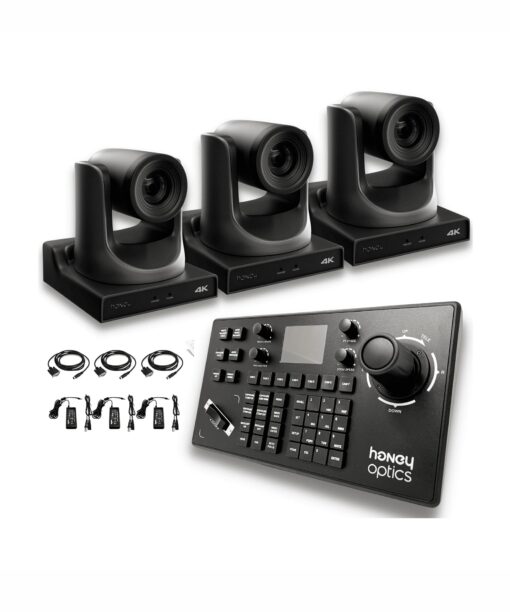Articles
SDI or NDI PTZ Camera?
Should you choose an SDI or NDI PTZ camera? If you’re doing live streaming or creating other types of video content, you may be wondering whether you need an NDI or SDI PTZ camera. It’s important to understand the difference between the two to make an informed decision.
So, what is the difference between SDI and NDI? What are the pros and cons of each?
What Is an SDI PTZ Camera?
SDI stands for Serial Digital Interface. The technology has been around for decades (since at least the 90s), and it still has its uses even today. For example, SDI cables can transmit uncompressed video over long distances.
SDI cables can connect to cameras, televisions, video switchers, encoders, production systems, and more. They’re helpful for situations where your cabling may need to be 50-feet or longer.
Most PTZ cameras use SDI, but newer models can also use NDI.
What Is an NDI PTZ Camera?
An NDI camera communicates via the Network Device Interface (NDI) protocol. Therefore, they can integrate with software apps and connect to your LAN.
NDI is a video-over-IP standard created by NewTek that makes it easier to transmit high-definition video for live video or live streaming productions. The two-way communication that NDI offers allows NDI PTZ cameras to be controlled using one ethernet cable. In addition, that single cable can transmit audio and video. To top it all off that camera can be completely powered by that same ethernet cable. Allowing you to just run a single cable!
Additionally, NDI has an auto-discovery feature that makes it easy to manage video sources on your network. For example, PowerPoint slides or hymn lyrics can be sent from one device to another used for live streaming via NDI.
Choose the Perfect PTZ Camera
Pros and Cons of NDI and SDI PTZ Cameras
SDI and NDI PTZ cameras both have advantages and disadvantages. Therefore, it’s important to weigh the pros and cons when deciding which camera is suitable for you.
Pros of SDI Cameras
- Can send uncompressed video over long distances
- Compatible with most video sources
- Broadcast quality video
Cons of SDI Cameras
- Video is uncompressed
- Camera cannot be controlled via SDI cables
Pros of NDI Cameras
- Easy to set up
- Use advanced video compression to send and receive high-definition video
- Auto-discovery feature allows for easy management of video sources
- Low latency audio and video
- Can be powered by same Ethernet Cable
- Can be PTZ controlled via same cable
Cons of NDI Cameras
- Video compression
Many streamers prefer NDI because the technology is newer, and it compresses the video for better streaming quality with lower latency. Besides, you can easily livestream in 4K with an NDI camera for crisper, clearer video, and better quality audio.
Fortunately, you’ll find that many modern PTZ cameras have the option for both. Honey Optics cameras are NDI, but we can stream through an SDI output.
NDI vs. SDI Pan Tilt Zoom Cameras
Now that you better understand each technology, you can decide whether an SDI or NDI PTZ camera is right for you. Live streamers tend to prefer NDI cameras, but there’s still a place for SDI because it can transmit video over a longer distance without compromising on quality. However, even with this in mind, NDI’s benefits outweigh the drawbacks.
If you’re having trouble deciding which option is best for you, why not choose a camera that offers both? At Honey Optics, our NDI PTZ cameras can stream to 4 outputs, including SDI.
Although NDI is generally considered the standard for live video, it’s beneficial to have the option for SDI output as well.











What is the measured latency with NDI and SDI on your camera ? (@1080p)